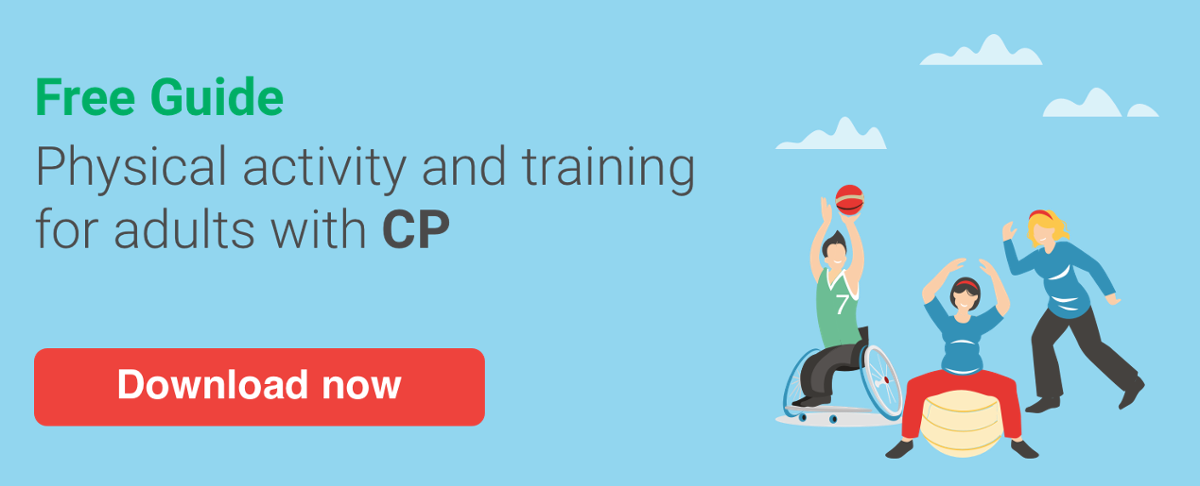
06-Oct-2022How Can You Live a Fulfilling Life with Fatigue and Cerebral Palsy?

Back to Blog Overview
Fatigue is a common symptom for people with cerebral palsy (CP). Although there are no specific treatments for fatigue, there are still things you can do.
When a person experiences fatigue, it is often described as excessive tiredness or exhaustion. Fatigue usually feels more severe than general tiredness and is not relieved by rest or sleep.
Research has shown that the proportion of people with chronic fatigue is significantly higher among adults with CP than in the general population.
Physical fatigue and mental fatigue
We generally distinguish between two types of fatigue: Physical fatigue is related to a reduced capacity to sustain force or power, and is often associated with physical activities. Mental fatigue, on the other hand, is often expressed in terms of reduced memory, concentration and attention. In adults with CP, physical fatigue is most prominent.
Causes of fatigue
We do not know what causes chronic fatigue in adults with CP, but there is knowledge regarding its occurrence. For example, we know that the prevalence of fatigue is greatest in those with a moderate level of CP. This may be due to this group having the greatest imbalance between workload and work capacity in their daily life.

In fact, a study showed that children with moderate CP used three to five times as much energy walking compared to people without a disability. Naturally, this puts a great deal of stress and strain on the body and the nervous system over time.
Read more: Botox For Cerebral Palsy – Does It Help?
Can fatigue be treated?
There are currently no specific treatments for fatigue, but that does not mean there is no hope for those who experience it.
When a person has been diagnosed with fatigue, there’s usually a need for a comprehensive assessment of the circumstances. This involves mapping the workload a person experiences in his or her daily life, both at home, at school, at work and in the spare time. In addition, the physical performance and capacity should be assessed as well.
Once done, a mapping should lead to certain adaptations to make the person in question as independent as possible. Mind that independence does not necessarily translate to being able to do everything yourself, but having the possibility to decide for yourself. Small things like getting assistance in daily chores such as shopping, cleaning and cooking can be enough to create a surplus of energy that can be spent on enjoyable and fun activities.
Fatigue and physical activity
Many people think that fatigue and physical activity don’t go well together, but that’s not the case! As a matter of fact, physical activity is important in order to improve fitness and stamina to master daily activities.
We know that fatigue can be associated with reduced fitness. Ideally, people with CP should focus on fitness and stamina already in their childhood. It’s important to not only focus on functional skills but also be conscious of developing one’s stamina to create a capacity to perform various tasks and activities. Good habits established early in life will likely be beneficial later in life.
Read more: What Do We Know About Physical Activity and Cerebral Palsy?
For people with impaired motor function, it may be challenging to find activities that are feasible and at the same time provide a high heart rate. Luckily, you can get quite far with creativity and adaptation. You can, of course, work out on your own, but participating in activities with others can be more meaningful and motivational.
Having fatigue doesn’t mean you have sit around and do nothing. More than anything, it’s about finding a balance between rest and activities you enjoy.
Do you want to know more about CP?
Read our resource page with answers to most of your questions.
Sources:
Jahnsen, R., Villien, L., Stanghelle, J. K., & Holm, I. (2003). Fatigue in adults with cerebral palsy in Norway compared with the general population. Dev Med Child Neurol, 45(5), 296-303.
Opheim, A., Jahnsen, R., Olsson, E., & Stanghelle, J. K. (2009). Walking function, pain, and fatigue in adults with cerebral palsy: a 7-year follow-up study. Dev Med Child Neurol, 51(5), 381-388. doi:10.1111/j.1469-8749.2008.03250.x

Rikke Damkjær Moen brings many years of experience as clinical physiotherapist to the Made for Movement team. Her mission is to ensure that everybody, regardless of mobility problems, should be able to experience the joy and health benefits of physical activity. As our Medical Manager, Rikke is passionate about sharing knowledge so that individuals with special needs, families, and clinicians can discover the possibilities and solutions provided by Made for Movement.


